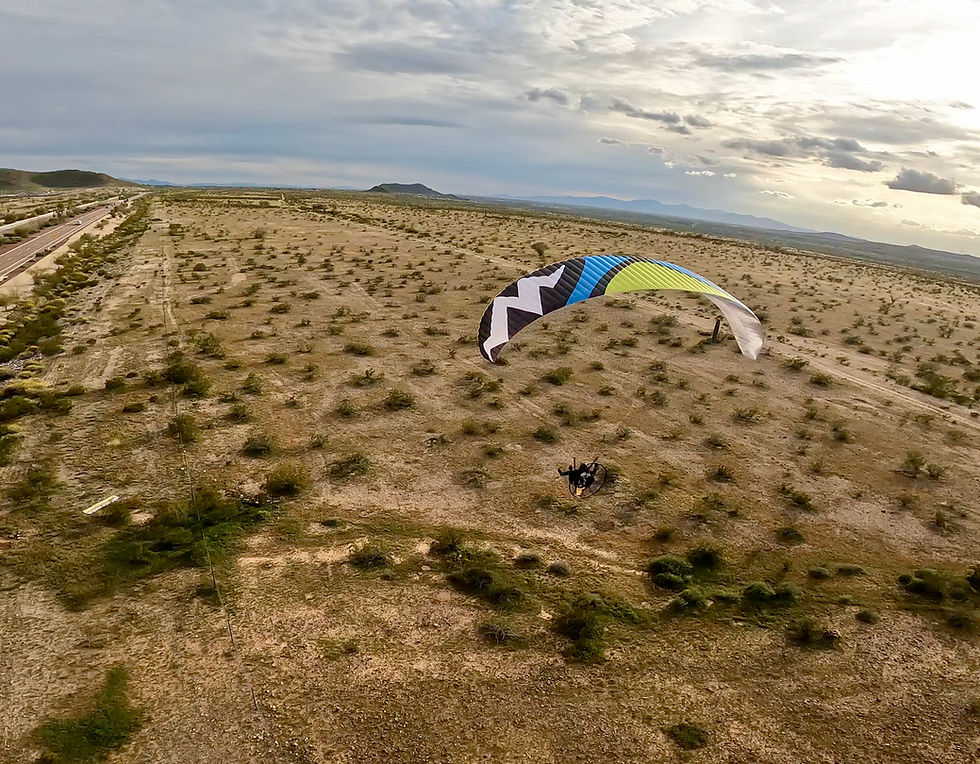Explore Comprehensive Paramotor Training Programs
- Don Youngker
- Jul 17
- 3 min read
Are you fascinated by the freedom of flying? Do you want to experience the thrill of the sky without the complexities of traditional aviation? Paramotoring, or powered paragliding, could offer the perfect adventure. With the right training, you can soar above landscapes and experience nature like never before. This blog post dives deep into the diverse paramotor programs overview available, how to choose the right one, and essential insights to guide your journey.
Paramotor Programs Overview
A paramotor training program encompasses a variety of learning experiences tailored for individuals with different skill levels, from complete beginners to experienced pilots. These programs often include ground school, flight theory, and practical flight training with an instructor.
Most programs typically start with a ground school where key concepts, such as aerodynamics, weather conditions, and safety protocols, are taught. The focus is on understanding how a paramotor operates and what to expect when you’re up in the air. After this foundational training, students will proceed to practical flight lessons with experienced instructors.
The duration and structure of these programs vary significantly, but many last from a few days to several weeks. This is wherein aspiring pilots accumulate the necessary flying hours to feel confident and safe in their piloting skills.

Nearby Locations for Paramotor Training
Choosing the right location for your paramotor training can significantly enhance your learning experience. It's essential to find a training facility that is not only reputable but also located in an area with favorable flying conditions.
Open Spaces: Look for programs in open, unobstructed areas. Training near mountains or large fields is ideal as these locations minimize the risk of obstacles during your practice flights.
Availability of Resources: Training locations that have a school nearby offering equipment hire and maintenance mean that you can focus on flying without logistical hassles.
Weather Conditions: The best locations often boast consistent weather patterns, offering great flying days year-round.
Many paramotor schools provide accommodation and additional training outings if you plan to invest your time and energy fully.

Key Benefits of Structured Training
Participating in a well-structured paramotor training program offers numerous advantages:
Safety First: Learning from qualified instructors ensures that you are exposed to safe piloting practices. Emergency protocols, weather assessments, and understanding your equipment form a vital safety net.
Skill Development: Formal training enables rapid skill acquisition. Instead of learning through trial and error, you’ll receive immediate feedback, accelerating your learning curve.
Network and Community: Joining a training program connects you with like-minded individuals. Many programs foster a community that continues even after training is complete. This network can provide ongoing support, advice, and camaraderie.
Certification: Completing a recognized training program provides certification, adding legitimacy to your flying experience. It may also open opportunities for insurance, rental equipment, or advanced training courses.
Confidence Building: Structured training helps build your confidence. Acquiring comprehensive knowledge, practicing maneuvers, and flying with guidance ensures you feel ready for solo flight.
When selecting a training program, consider the comprehensive support that comes with it. Look for schools that offer continual training and advanced courses after your initial program ends.
Choosing the Right Training Program
While many paramotor training programs exist, their quality can vary. Here are some tips to help you choose the right one:
Research Accreditation: Look for programs associated with reputable organizations. Accreditation signifies that a school adheres to high safety and training standards.
Instructors’ Experience: Research the qualifications and experience levels of the instructors. Experienced pilots and instructors can provide insights that enhance your learning process.
Equipment Quality: Ensure that the school has well-maintained and up-to-date equipment. Flying with reliable gear is crucial for effective training and safety.
Training Reviews: Read reviews and testimonials from former students to gauge the quality of the program. Personal experiences can be a strong indicator of what to expect.
Visit Schools: If possible, visit prospective schools. Observe the atmosphere, interact with instructors, and assess their approach to training before making a decision.
Remember, you’re not just signing up for lessons; you’re committing to a thrilling and rewarding adventure.
Final Thoughts on Your Paramotor Journey
Embarking on a journey to master paramotoring is both exciting and fulfilling. A well-structured paramotor training program equips you with the skills and knowledge needed to soar through the skies safely.
As you contemplate taking the leap into paramotoring, keep in mind the importance of selecting the right program, the necessity of following regulations about flying, and the community benefits that come from finding a supportive group of fellow aviators.
There's a vast world waiting for you above. Equip yourself with knowledge and take your first flight towards an exhilarating adventure in the skies!





Comments